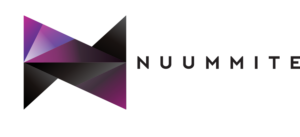Businesses look for advanced technologies to improve their performance, mainly, in order to increase profit, that’s not a secret. In this regard, when ChatGPT was introduced, a race was made on how they can benefit from it in the most possible way. However, has anyone thought of what would happen if we combine the most 2 massive technologies in our day; ChatGPT and RPA together?
What is ChatGPT?
In November 2022, Sam Altman, the founder and CEO of OpenAI, launched ChatGPT to the world, which revolutionized the way businesses function. It is a large language model (LLM) that is based on Natural Language Processing (NLP) technology in extracting results and answering different requests.
Since then, it has been used in generating homework assignments, reports, strategies, marketing plans, articles and more using its machine-learning algorithms to respond to income information.
In the case scenario of combining ChatGPT and RPA together, what do we expect?
Basically, RPA is a technology used in automating repetitive tasks, replacing humans to result in more accurate and effective outcomes. While it’s used to enhance processes and productivity, it’s only used in structured tasks; with a clear history of data that are related to similar tasks. As a result, RPA is implemented in positions like data entry, customer servicing and others.
ChatGPT can enhance RPA’s work in reducing the gaps between humans and bots, using its natural language processing capabilities, and increasing the accuracy of the outcome results. Since it is able to work on unstructured tasks and generate new results without saved data, it increases the abilities of RPA and improves its interactions with humans.
Integrating ChatGPT and RPA can assist in data-driven decision-making, providing executives and managers with consolidated information, trends, and predictions. Organizations benefit from this synergy by making better decisions, optimizing processes and distributing resources more efficiently.
In complex industries like finance and healthcare, regulatory compliance is of utmost importance. RPA systems are adept at automating rule-based tasks, but they may struggle with nuanced interpretations of regulations. By combining ChatGPT and RPA, bots can interpret complex legal language and provide contextual explanations, ensuring that processes remain compliant and reducing the risk of errors that could lead to regulatory issues.
Where to find ChatGPT
Almost everywhere. It has entered the world of business and marketing and reshaped the game. Here are some of the cases where it is most used:
- Customer service
Using ChatGPT as part of a chatbot allows for seamless handling of common customer queries and support requests. It can be aligned to offer 24/7 customer service and support. - Marketing analysis
Marketers can automate the process of gathering and analyzing marketing data to improve campaigns’ effectiveness. In order to optimize marketing campaigns, you would need to set up analytics tools that track website traffic, social media engagement, and open email rates. - Content marketing
With a content management system (CMS), it can automate the creation and distribution of content. Creating a content calendar, automating the distribution of content across different channels, and analyzing the effectiveness of content marketing campaigns would be part of this process.

